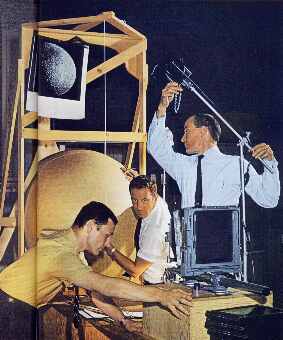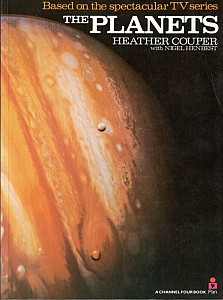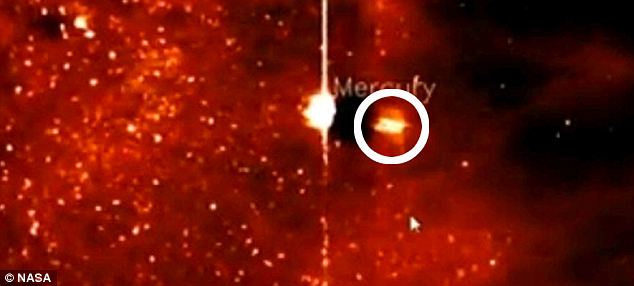Doubts: Space travel, artificial earth satellites, Hubble &c
Re: Doubts about space travel, artificial earth satellites,
Where was we looking at and they said the crescent shape was Venus? I remember discussing that. Then I found another place that said it was earth. However, I think it's neither earth or Venus, but simply the moon.
There were several earthrise photos taken by NASA. I did a search on them once. Sometimes the earth looks huge, and other times small, sometimes blue, and sometimes white.
There were several earthrise photos taken by NASA. I did a search on them once. Sometimes the earth looks huge, and other times small, sometimes blue, and sometimes white.
-

FirstClassSkeptic - Posts: 671
- Joined: 20 Mar 2011 21:19
Re: Doubts about space travel, artificial earth satellites,
[1] FCS, using the 'search' feature from the menu page allows all the posts to be searched.
[2] That Venus thing was originally described as Venus. I think I was the first person to point out the size anomaly. So someone has decided a point of light must be Venus. Unfortunately, Venus is about the same brightness as many stars, giving the fakers a bit of a problem, since they have established a tradition of not including stars. So only Venus has to be said to be visible, and only just.
Note the crescent object: the sun has to be almost head-on to get that near-rim effect. They haven't bothered to get the lighting on the supposed moon equipment consistent with that.
[3] Re earthrise, they would be composites of a photo of one of their plaster moons - much easier to photograph - and some sort of earth composite. You must have tried taking photos of the moon with an ordinary camera - it looks tiny. The earth pictures they use would have needed special lenses and for that matter no grubby thick glass to shoot through.

Small model moon - they also built a much larger model.
[4] Note that there are no photos of earth taken from the moon, or no significant number. And yet earth would be spectacular - it would appear about four times the diameter the moon does to us. And note the because of the way the moon faces the earth, from the supposed lander position the earth would be almost static in space, hanging still in the dark sky, just turning once in our earth days, complete with clouds and colour effects - it is home, and more visually interesting than the dark grey moonscape. While the sun slowly moves only 12 degrees in an entire earth day. My guess is it was too difficult to fake - the clouds in particular could be wrong - and the roof would be a problem. There's be no space for cranes and suspended gadgetry.
[2] That Venus thing was originally described as Venus. I think I was the first person to point out the size anomaly. So someone has decided a point of light must be Venus. Unfortunately, Venus is about the same brightness as many stars, giving the fakers a bit of a problem, since they have established a tradition of not including stars. So only Venus has to be said to be visible, and only just.
Note the crescent object: the sun has to be almost head-on to get that near-rim effect. They haven't bothered to get the lighting on the supposed moon equipment consistent with that.
[3] Re earthrise, they would be composites of a photo of one of their plaster moons - much easier to photograph - and some sort of earth composite. You must have tried taking photos of the moon with an ordinary camera - it looks tiny. The earth pictures they use would have needed special lenses and for that matter no grubby thick glass to shoot through.

Small model moon - they also built a much larger model.
[4] Note that there are no photos of earth taken from the moon, or no significant number. And yet earth would be spectacular - it would appear about four times the diameter the moon does to us. And note the because of the way the moon faces the earth, from the supposed lander position the earth would be almost static in space, hanging still in the dark sky, just turning once in our earth days, complete with clouds and colour effects - it is home, and more visually interesting than the dark grey moonscape. While the sun slowly moves only 12 degrees in an entire earth day. My guess is it was too difficult to fake - the clouds in particular could be wrong - and the roof would be a problem. There's be no space for cranes and suspended gadgetry.
-

rerevisionist - Site Admin
- Posts: 1056
- Joined: 18 Mar 2011 11:40
Re: Doubts about space travel, artificial earth satellites,
I'm just looking through a DVD 'Space Mission - Reaching for the Stars' published 2006 by what looks like a British branch of a German Company, Delta Music. There's a history of US 'space research' (has to be in quote marks) in 9 parts, including NASA computer graphics. Judging by the list of contents this may have been compiled for the 2000 market. It includes the supposed meeting of a US spacecraft with the Mir (meaning 'peace'); and the Shuttle explosion, and the supposed images from Mars, with more emphasis on the NASA people applauding each other than the event. In view of the obviously staged nature (Mr President on the phone etc) one has to wonder whether the Columbia explosion was itself faked or staged deliberately.
That DVD also includes 80 mins of 'space views'. And it has to be said there are views showing the entire earth, i.e. a long way out of any atmosphere, which look painfully unrealistic. For one thing the clouds are completely immobile, and yet some of these views must take long enough for clouds to move in real time. These could simply be views of a globe filmed on earth; and/or a computer model - by 2000 computer graphics were easily good enough, as 'Lord of the Rings' shows, and of course cloud simulations had been tried for years as part of attempts at weather modelling. Also, the day/night shadows look much too diffuse; and the bit of the craft, e.g. fins, are in sharp focus, suggesting the images were superimposed.
The ones closer earth look more realistic but even those look like still photos being scanned.
That DVD also includes 80 mins of 'space views'. And it has to be said there are views showing the entire earth, i.e. a long way out of any atmosphere, which look painfully unrealistic. For one thing the clouds are completely immobile, and yet some of these views must take long enough for clouds to move in real time. These could simply be views of a globe filmed on earth; and/or a computer model - by 2000 computer graphics were easily good enough, as 'Lord of the Rings' shows, and of course cloud simulations had been tried for years as part of attempts at weather modelling. Also, the day/night shadows look much too diffuse; and the bit of the craft, e.g. fins, are in sharp focus, suggesting the images were superimposed.
The ones closer earth look more realistic but even those look like still photos being scanned.
-

rerevisionist - Site Admin
- Posts: 1056
- Joined: 18 Mar 2011 11:40
Re: Doubts about space travel, artificial earth satellites,
I've tried to take pictures of the moon. The biggest problem I had was over exposure. The moon is brighter than I thought.
The relative size of the crescent tells me it's the moon, and the LM is on earth. As you say, the earth looking from the moon would be bigger.
Good point you make about seeing the stars. When there's a crescent moon, you can still see the stars. So if you can see a crescent earth from the moon, then why can't you see the stars?
The relative size of the crescent tells me it's the moon, and the LM is on earth. As you say, the earth looking from the moon would be bigger.
Good point you make about seeing the stars. When there's a crescent moon, you can still see the stars. So if you can see a crescent earth from the moon, then why can't you see the stars?
-

FirstClassSkeptic - Posts: 671
- Joined: 20 Mar 2011 21:19
Re: Doubts about space travel, artificial earth satellites,
I think the moonwalk fraud is collapsing. To be honest I have little patience with the professional liars. They've made a fortune - why can't they be men and not grovelling lying cowards expecting huge hand-outs.
Moon's brightness - remember the lit parts of the moon are in the direct line of the sun. If the moon was completely white, the bright parts of the moon would be as bright as a white wall in full sunlight though of course small. The albedo is obviously pretty low - I think 8% is the figure quoted. If the moon had a mirror surface, a full moon would have a small very brilliant patch.
Moon's brightness - remember the lit parts of the moon are in the direct line of the sun. If the moon was completely white, the bright parts of the moon would be as bright as a white wall in full sunlight though of course small. The albedo is obviously pretty low - I think 8% is the figure quoted. If the moon had a mirror surface, a full moon would have a small very brilliant patch.
-

rerevisionist - Site Admin
- Posts: 1056
- Joined: 18 Mar 2011 11:40
Re: Doubts about space travel, artificial earth satellites,
Hubble Telescope
I just bought on impulse an attractively-packaged 3 DVD set, with three 44 min videos (which would fit on one DVD). 'Discovery Channel' box; HUBBLE A Look Into The Universe. Just to see. Almost all of it is about training underwater, rockets, the shuttle, and the (supposed?) telescope. And heroic astronauts doing outside space activity with their electric screwdrivers! The three DVDs have about 20 'chapters' averaging 6 or 7 minutes.
I haven't looked carefully - much of the stuff is dull studio presented types and voiceovers of what looks like stock film of rockets. But in one clip the amazing precision mirror was in view - up on end and exposed to air - remember these things are supposed to have a serious problem of bending under their own weight and presumably surface-silvered. I'm pretty sure the reflection had a ripple, similar to what you get looking through window glass which isn't very flat; I must check.
There are a few token photos, which are very disappointing - the same sort of disappointment many people got seeing the supposed walking on the moon, with the gravity not being 1/6 of earth, and with no view of earth etc. It would be nice to see 19th century photos, then 20th century as reflectors improved, then the same bits of sky with the Hubble, to show the amazing increase in resolution as the true(r) structure of objects emerged. But instead cheesy colourised stuff, and even obviously fake 3-D views as in something like Star Trek, where it's impossible they could ever have had that much parallax.
So I'm leaning to the view this was another fake.
I just bought on impulse an attractively-packaged 3 DVD set, with three 44 min videos (which would fit on one DVD). 'Discovery Channel' box; HUBBLE A Look Into The Universe. Just to see. Almost all of it is about training underwater, rockets, the shuttle, and the (supposed?) telescope. And heroic astronauts doing outside space activity with their electric screwdrivers! The three DVDs have about 20 'chapters' averaging 6 or 7 minutes.
I haven't looked carefully - much of the stuff is dull studio presented types and voiceovers of what looks like stock film of rockets. But in one clip the amazing precision mirror was in view - up on end and exposed to air - remember these things are supposed to have a serious problem of bending under their own weight and presumably surface-silvered. I'm pretty sure the reflection had a ripple, similar to what you get looking through window glass which isn't very flat; I must check.
There are a few token photos, which are very disappointing - the same sort of disappointment many people got seeing the supposed walking on the moon, with the gravity not being 1/6 of earth, and with no view of earth etc. It would be nice to see 19th century photos, then 20th century as reflectors improved, then the same bits of sky with the Hubble, to show the amazing increase in resolution as the true(r) structure of objects emerged. But instead cheesy colourised stuff, and even obviously fake 3-D views as in something like Star Trek, where it's impossible they could ever have had that much parallax.
So I'm leaning to the view this was another fake.
-

rerevisionist - Site Admin
- Posts: 1056
- Joined: 18 Mar 2011 11:40
Re: Doubts about space travel, artificial earth satellites,
I might have posted this before:
https://hubblesite.org/reference_desk/fa ... cat=topten
Can Hubble take pictures of Earth?
The surface of the Earth is whizzing by as Hubble orbits, and the pointing system, designed to track the distant stars, cannot track an object on the Earth. The shortest exposure time on any of the Hubble instruments is 0.1 seconds, and in this time Hubble moves about 700 meters, or almost half a mile. So a picture Hubble took of Earth would be all streaks.
https://hubblesite.org/reference_desk/fa ... cat=topten
-

FirstClassSkeptic - Posts: 671
- Joined: 20 Mar 2011 21:19
Re: Doubts about space travel, artificial earth satellites,
More on Hubble
The DVDs I have are copyright dated 2008, 2009, and 2010. The more I look at them the more suspicious I get.
* Reflecting telescope with a large reflector. These things are carefully designed (on earth) to flex so that the desired curvature is obtained under gravity. (Or so they say). Can a precision thing really be launched up to several g - whatever the offiical figure is these days - and remain precise? It's as though someone pushed down on it during launch.
* To get an unobstructed view of the sky, the telescope would presumably have the mirror at the bottom end of an open tube, as with telescopes on earth. On earth, this is more or less OK - it can be cleaned, polished, dusted... But out in space, under very low atmospheric pressure, and with probably extremely low temperatures, with micro meteorites getting free access, would this work?
* On earth, clever precision machinery points the telescope to track its target. But there's millions of tons of the earth anchored to it giving stability. Can a thing circling the earth be expected to track with such precision? Imagine a jet of fuel, or compressed air, rotating the thing a bit; these would have an effect like a jet of air carried by a skater on ice. And/or gyroscopes with their vibrations absorbed by the telescope; surely this would shakes to the entire thing? And it will tend to 'fall' towards earth with the centre of gravity leading. Can the centre of gravity be controlled to the fine standard needed? Remember the more the magnification, the more difficult it is to stablise the image. Could it really have been made as precise as they claim?
* Looking at the images, it's painful to note e.g. four-way little 'rays' which look fake. And the colour effects which look like watercolours....
______________________
On painted images, look at this 1985 paperback cover--- It doesn't even need a close-up of the top left to see how the artist couldn't be bothered to curve the 'clouds of Jupiter' round properly, but just scribbled a bit of purplish ?chalk to give a supposed distance effect.

[Image hosted on imgur.com]
The DVDs I have are copyright dated 2008, 2009, and 2010. The more I look at them the more suspicious I get.
* Reflecting telescope with a large reflector. These things are carefully designed (on earth) to flex so that the desired curvature is obtained under gravity. (Or so they say). Can a precision thing really be launched up to several g - whatever the offiical figure is these days - and remain precise? It's as though someone pushed down on it during launch.
* To get an unobstructed view of the sky, the telescope would presumably have the mirror at the bottom end of an open tube, as with telescopes on earth. On earth, this is more or less OK - it can be cleaned, polished, dusted... But out in space, under very low atmospheric pressure, and with probably extremely low temperatures, with micro meteorites getting free access, would this work?
* On earth, clever precision machinery points the telescope to track its target. But there's millions of tons of the earth anchored to it giving stability. Can a thing circling the earth be expected to track with such precision? Imagine a jet of fuel, or compressed air, rotating the thing a bit; these would have an effect like a jet of air carried by a skater on ice. And/or gyroscopes with their vibrations absorbed by the telescope; surely this would shakes to the entire thing? And it will tend to 'fall' towards earth with the centre of gravity leading. Can the centre of gravity be controlled to the fine standard needed? Remember the more the magnification, the more difficult it is to stablise the image. Could it really have been made as precise as they claim?
* Looking at the images, it's painful to note e.g. four-way little 'rays' which look fake. And the colour effects which look like watercolours....
______________________
On painted images, look at this 1985 paperback cover--- It doesn't even need a close-up of the top left to see how the artist couldn't be bothered to curve the 'clouds of Jupiter' round properly, but just scribbled a bit of purplish ?chalk to give a supposed distance effect.

[Image hosted on imgur.com]
-

rerevisionist - Site Admin
- Posts: 1056
- Joined: 18 Mar 2011 11:40
Re: Doubts: Space travel, artificial earth satellites, Hubble telescope
How many people have access to Hubble, to actually use it? I would imagine that it is even more exclusive than the large telescopes, which are very exclusive themselves.
-

FirstClassSkeptic - Posts: 671
- Joined: 20 Mar 2011 21:19
Re: Doubts: Space travel, artificial earth satellites, Hubble 5 of 6
I was interested in astronomy when I was young; but I was put off by university maths. (In fact, I could never believe in Heather Couper as a serious astronomer - I didn't believe she'd understand the maths of orbits as viewed from earth). However I assumed the Hubble would do something like map the heavens - something like an updated Messier catalogue. With earlier black and white photos supersed by far more detailed sharp pictures, so the faint fuzzy bits would be revealed in glorious detail. I was a bit puzzled that nothing like this ever seemed to happen - just an occasional gee whiz picture of some well known feature, like the 'horsehead' nebula. Suspiciously colourised, for the naive market. Then I remember reading that the Hubble had offered virtual access - write in and ask them, and they'll point it to wherever you want. Except, it turned out, the place on the moon where NASA's heroic astronauts had supposedly walked their vacuum walk. Maybe it was too light; or too dark; or hard to focus... It didn't occur to me that both the landing place AND the telescope were fakes.
-

rerevisionist - Site Admin
- Posts: 1056
- Joined: 18 Mar 2011 11:40
Re: Doubts: Space travel, artificial earth satellites, Hubbl
Why didn't Hubble discovery this?
https://www.sott.net/articles/show/23829 ... lar-system
Actually, I am not too impressed with his photo.
This is a working example of what I was trying to express before: New or improved techniques in digital processing and filtering can create better photos from land based telescopes.
A New Zealand man has become the first amateur astronomer to take a direct photograph of a solar system in the first stages of development. Rolf Olsen's stunning image shows Beta Pictoris, a bright young star in the southern hemisphere, surrounded by a "circumstellar disk" - a huge, flat cloud of swirling debris kicked up by a flurry of comet, asteroid and minor body collisions near the new star.
https://www.sott.net/articles/show/23829 ... lar-system
Actually, I am not too impressed with his photo.
Photographing circumstellar disks is difficult, however, because light from the central star normally swamps the faint glow of the material around it. Powerful telescopes and new data filtering techniques have allowed astronomers to subtract the flood of distant starlight, revealing light from the objects near it, but most amateurs don't attempt such procedures. Olsen achieved the feat by carefully following steps outlined in an academic article about Beta Pictoris, he said.
That paper, written by Lecavelier and his colleagues, described a method of imaging the Beta Pictoris system by taking a photo of a similar reference star under the same conditions, and then subtracting an equal amount of light, pixel for pixel, from his Beta Pictoris image. "For this purpose, I used Alpha Pictoris," Olsen said. "This star is of nearly the same spectral type ... and is also close enough to Beta in the sky so that the slight change in telescope orientation should not affect the diffraction pattern." (Diffraction caused the crosshairs seen in the photo.)
Olsen adjusted the exposure time of his photos of the stars to equalize their brightness. He then used simple software to subtract the image of Alpha from his image of Beta, producing a magnificent picture of the Beta Pictoris solar system with a shadowy spot in place of its central star, and the circumstellar disk radiating out from it.
"I was very excited when I saw that I had a faint signal from the disk itself. I lined up my image and checked it against the professional images, and I was happy to see that the orientation of what looked like the dust disk in my image coincided perfectly with what I could see in the professional images. It feels great to have captured this image," Olsen wrote in an email.
This is a working example of what I was trying to express before: New or improved techniques in digital processing and filtering can create better photos from land based telescopes.
-

FirstClassSkeptic - Posts: 671
- Joined: 20 Mar 2011 21:19
Re: Doubts: Space travel, artificial earth satellites, Hubble Space Telescope
A gigantic object the size of a planet has appeared on astronomers' screens lurking near Mercury, with UFO hunters around the world wondering whether it’s an alien ship.
The object appears from nowhere in a sequence of images of a coronal ejection from the Sun, taken by a Nasa telescope.
As the flare races past Mercury, a huge round object appears next to it—but Nasa scientists insist that the object is merely a result of the way the images are processed.
https://www.dailymail.co.uk/sciencetech/ ... rcury.html

-

FirstClassSkeptic - Posts: 671
- Joined: 20 Mar 2011 21:19
Return to Science, Nuclear Physics, Astronomy, Space Travel
Who is online
Users browsing this forum: No registered users and 1 guest